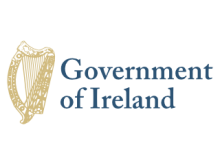Resource information
These Regulations provide, for purposes of implementation of the give effect to Irelands Third Nitrates Action Programme, rules relative to good agricultural practice to protect waters against pollution from agricultural sources and prescribe measures for these purposes, including: periods when land application of fertilizers is prohibited; limits on the land application of fertilizers; storage requirements for livestock manure; and monitoring of the effectiveness of the measures in terms of agricultural practice and impact on water quality. They also concern minimization and storage of soiled water and ploughing and the use of non-selective herbicides. They give effect to several pieces of Community legislation regarding nitrate pollution, waste management and hazardous substances, groundwater and water policy and public participation.
Implements: Environmental Protection Agency Act, 1992. (1992-04-23)
Implements: Council Directive 91/676/EEC concerning the protection of waters against pollution caused by nitrates from agricultural sources. (1991-12-12)
Implements: Council Directive 75/442/EEC on waste. (1975-07-15)
Implements: Council Directive 80/68/EEC on the protection of groundwater against pollution caused by certain dangerous substances. (1979-12-17)
Implements: Directive 2000/60/EC of the European Parliament and of the Council establishing a framework for Community action in the field of water policy. (2000-10-23)
Implements: Directive 2003/35/EC of the European Parliament and of the Council providing for public participation in respect of the drawing up of certain plans and programmes relating to the environment and amending with regard to public participation and access to justice Council Directives 85/337/EEC and 96/61/EC. (2003-05-26)
Implements: Directive 2006/11/EC of the European Parliament and of the Council on pollution caused by certain dangerous substances discharged into the aquatic environment of the Community (Codified version). (2006-02-15)
Implements: Directive 2006/118/EC of the European Parliament and of the Council on the protection of groundwater against pollution and deterioration. (2006-12-12)
Implements: Directive 2008/98/EC of the European Parliament and of the Council on waste and repealing certain Directives. (2008-11-19)
Amended by: European Union (Good Agricultural Practice for Protection of Waters) (Amendment) Regulations 2014 (S.I. No. 463 of 2014). (2014-10-13)
Amended by: European Union (Good Agricultural Practice for Protection of Waters) (Amendment) Regulations 2014 (S.I. No. 134 of 2014). (2014-03-12)
Repealed by: European Union (Good Agricultural Practice for Protection of Waters) Regulations 2017 (S.I. No. 605 of 2017). (2017-12-20)
Repeals: European Communities (Good Agricultural Practice for Protection of Waters) Regulations 2010 (S.I. No. 610 of 2010). (2010-12-20)



